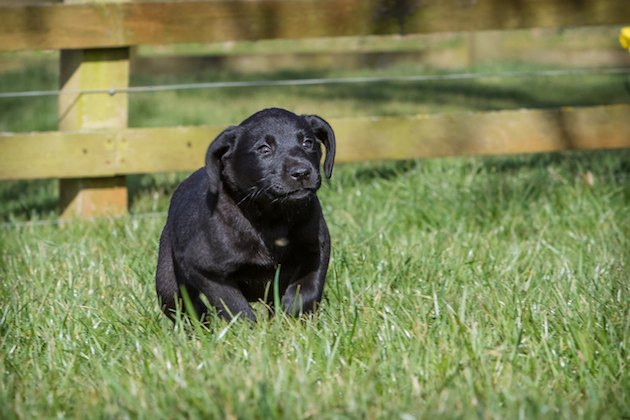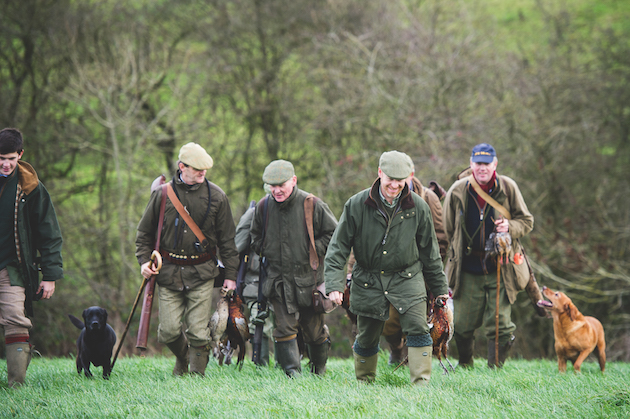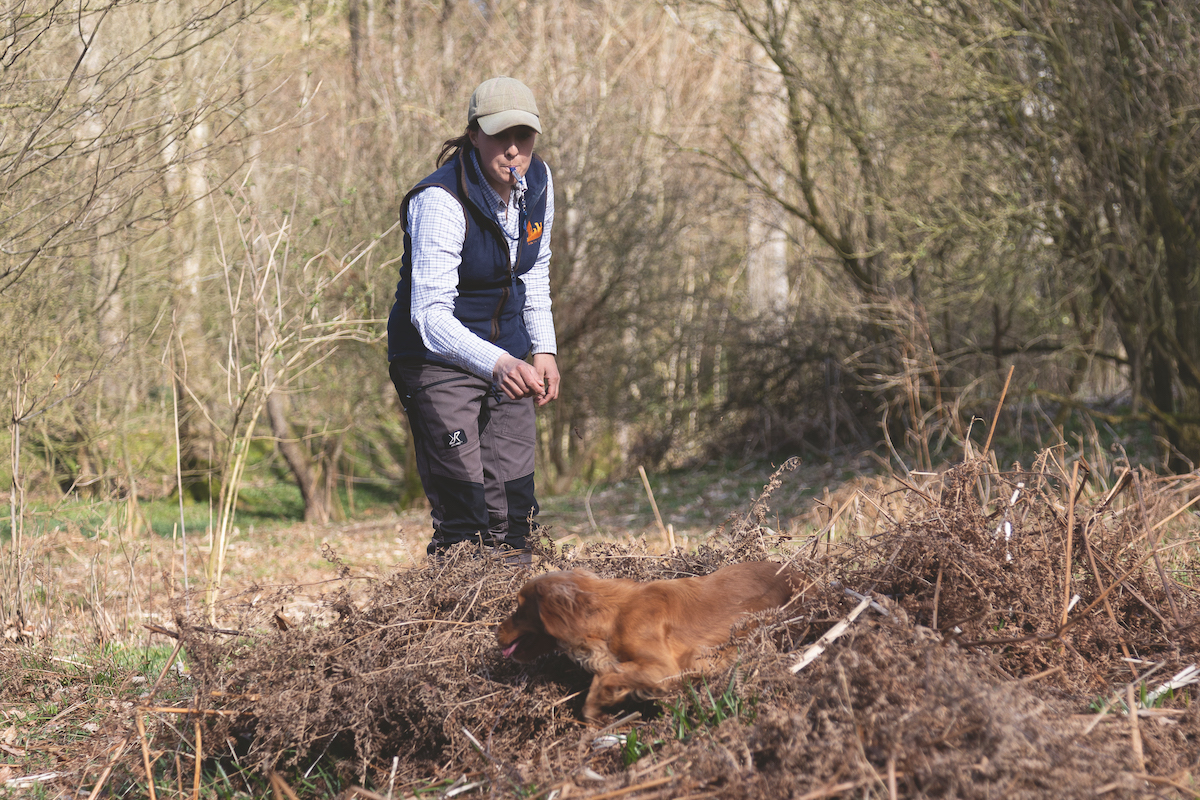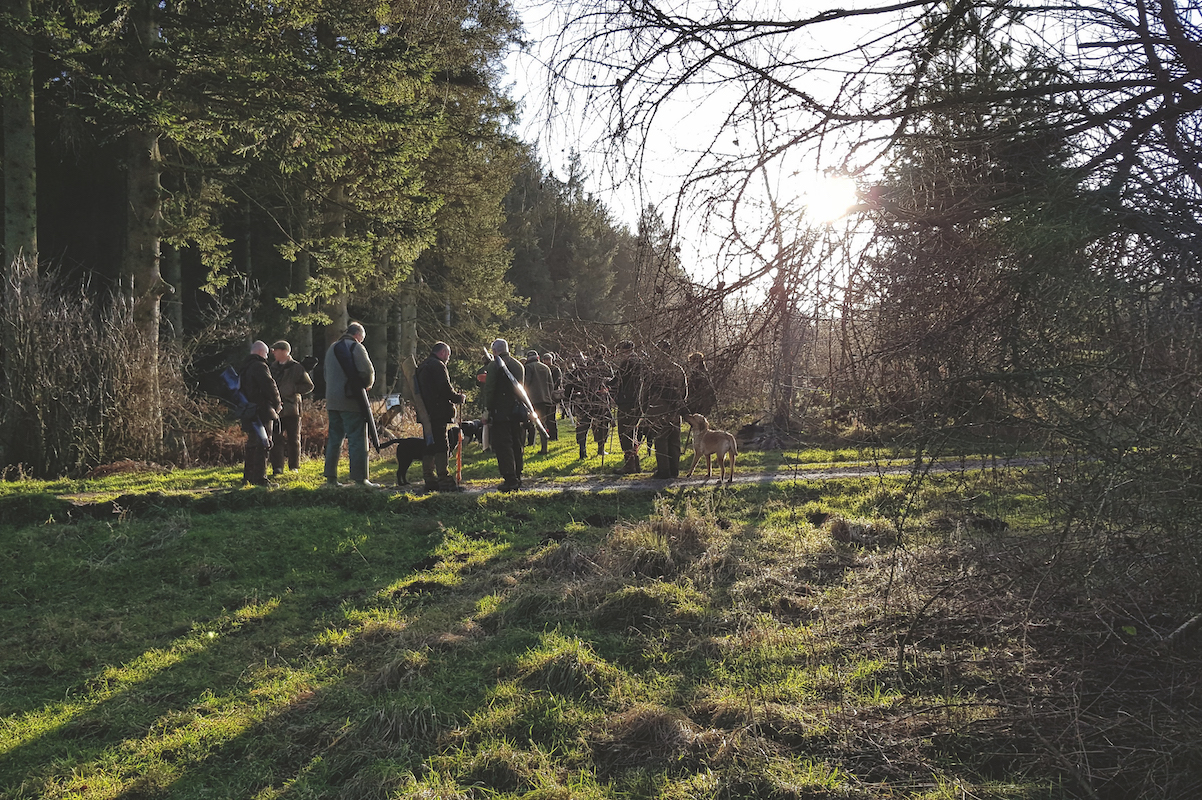Gundog training you can carry out in your garden (or even inside)
You don't have to have a field or large area to carry out basic gundog and puppy training. All these exercises can be practised inside or in a small garden.

You don't need a big garden for these training exercises
Here’s a list of basic gundog and puppy training exercises that you can practise whilst you’re social distancing or self-isolating at home. You don’t need a big area either. Just patience.
Getting a puppy used to a lead
Place a slip lead around the puppy’s neck, pushing the stop up to the correct position and then allowing the youngster to run about dragging the lead behind him. Gradually pick the lead up, but if the puppy starts to get stressed allow it to drop and just encourage the puppy to come back, lavishing him with praise as he does so.
Do this for just a few minutes a session. Very slowly build it up over subsequent weeks to the point where the puppy is happy to walk on a lead. Don’t stress or frighten the pup.

Teaching a puppy to sit and stay
How to teach a puppy to sit
Take a delicious smelly treat and with it closed in your fist, let the dog smell it so he knows you are holding something worthwhile. Lift up your closed fist, say sit and wait until the puppy is sitting still and being attentive before you open your hand and lower to give the dog the treat. If the puppy rushes before sitting lift up your fist again enclosing the treat and repeat the process. Practise for a minute or so at a time, a few times a day.
Teaching dog to walk to heel
You can do this exercise in the hall of your house or a corner of the garden. In fact, the smaller the area is better as the dog is less likely to be distracted. If you’re right-handed (so hold your broken gun in your right arm) you’ll want the dog to walk to heel on your left. Reverse the instructions if you’re left-handed. Don’t put the dog on a lead.
While the dog is watching, put a small amount of kibble in his bowl and hold it in your right hand. Tap your left leg with your left hand and walk along slowly, holding the bowl at chest height. The puppy will be interested in the food and so want to follow you. Encourage the dog to walk on your left by turning your body so it faces left. Give the puppy plenty of praise when it walks by you. Holding the food bowl up on your level will make the dog watch you and keep his head up.
Keep walking back and forward, frequently changing direction and keep the puppy by your left knee. When it walks correctly reward it with the bowl of food. Keep the training short and sweet. Five minutes here and there throughout the day is best rather than a 20 minute long session.
As soon as the dog understands it should walk alongside you can introduce the heel command. Say ‘heel’ every time you change direction. Shake the kibble in the bowl to keep the dog’s attention, saying the dog’s name at the same time and then the heel command.
Once the puppy is walking alongside you confidently then change the location of your training session. Be patient and keep the sessions short. Walls and garden fences are good natural barriers which make the dog stay close.
A dog that walks to heel off lead is a well-trained dog. You can introduce the slip lead later when it is walking to heel obediently. Put it on the dog and let the handle of the lead trail loosely on the floor while you carry on practising the heel work exercises described.
Introducing memory retrieves
Drop a dummy when the puppy is walking on the lead alongside you and then encourage the dog to walk on with you away from the retrieve for a reasonable distance. Now slip the lead off and encourage him to go back and collect the dummy.

A cocker spaniel puppy learning to jump over a small hedge
Teaching a puppy to jump
What if your gun dog doesn’t know how to jump over fences and ditches? What if your cocker spaniel insists on being lifted into the vehicle every time?
You need to get your gundog jumping confidently and here’s how. (However don’t encourage young puppies to jump – their growth plates aren’t closed so it can put a strain on their bones and joints.)
A low, rabbit netting fence is ideal. Put a board along the top so the dog can see how high it has to jump. Remember you need to have an incentive so the dog enjoys jumping and gets a reward, so have some treats to hand.
Again, you can practise this in a hallway with the netting reaching the width of the space. The first jumping lesson should be a relaxed affair, with the dog on a lead. Remember to encourage the dog all the time. With a spaniel we step over the jump first and then, with lots of encouragement ask the dog to follow. This is usually the first step a dog takes to becoming a proficient jumper.
COVID-19 makes shooting season ‘a huge gamble’
Shoots around the country have been wrestling with decisions about how many birds to put down, how many days to…
What you need to know about coronavirus and going out into the field in England from 13th May 2020
On Wednesday 13th May coronavirus guidance for shooters in England changed. You can now undertake both live quarry shooting and…
Don’t overdo the jumping for a start; one or two times for each lesson is usually sufficient.
There is one situation where things can start to go wrong, particularly where cocker spaniels are concerned. Being the characters they are, they soon work out that if they sit next to the fence – looking at you with appealing eyes – you will pick them up and lift them over. Resist the temptation.
When the dog is happy jumping a small fence to get over, start introducing the ‘over’ command which makes the dog associate the command with the act of jumping. Say ‘over’ just as the dog begins to jump.
By doing this exercise on a daily basis the lesson will soon become second nature. Eventually the dog will jump as you approach a fence when you say ‘over’. You really want the dog to jump over only on command – a discipline which could avoid large vet bills when the dog goes out to the shooting field.










